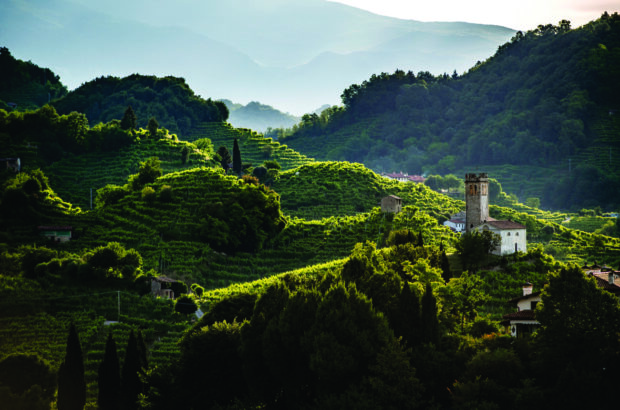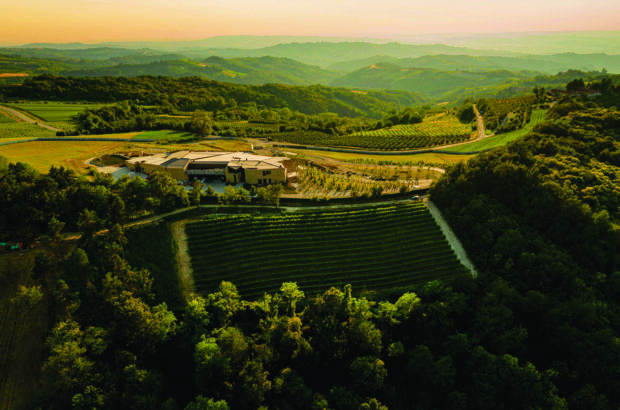The first thing Pepe Mendoza told me when we caught up over Zoom during harvest earlier this year was that his iPhone was broken. It’s a banal detail that Mendoza brought up only to explain the difficulties he’d initially had connecting to the sound for our call. But I’m mentioning it here because there’s something almost too on-the-nose about the fact that the gadget-destroying accident occurred while he was out working the land on one of his tractors.
The story of Mendoza’s winemaking career, after all, is of a man who has grown increasingly disillusioned with what he refers to as ‘technical’ and ‘industrial’ approaches, and who has instead become ever more focused on the land. Specifically his own piece of ‘Mediterranean’ land: the two Alicante DO vineyards where he spends so much time, whether on tractor or foot, and from which he makes a handful of beautifully poised, evocative wines that have challenged preconceptions of what Mendoza calls ‘one of the hottest parts of the hottest parts of Spain’.
Scroll down for five Pepe Mendoza wines to try
Back in August, with his microphone up and running, Mendoza’s apparently limitless enthusiasm for viticulture simply pours out in a torrent of words, as he explains how his philosophy of winemaking has evolved. ‘When I was younger, I believed the solutions were technical,’ he says. Today he’s looking for the ‘interesting point in the centre’ between laissez-faire natural winemaking and more conventional ways of working.
‘The thing about Pepe that I really take a shine to, and that really unlocks the potential in his wines, is his incredible curiosity,’ says Pierre Mansour, director of wine at The Wine Society. He has worked closely with Mendoza on the retailer’s exclusive red wine Mares de Luz. ‘He’s got these roots in making wines of a very high standard in a commercial, clean style, wines that reflect their grape varieties at different price points. He’s a “Volvo” in that way but, because he has that background, it means he had a really solid foundation for that moment when he wanted to get out on his own and start being a bit more experimental.’
A new approach

Pepe Mendoza Casa Agrícola in Alicante
The moment Mansour is talking about came in 2016 when Mendoza set up Pepe Mendoza Casa Agrícola with his wife Pepa Agulló. By then, Mendoza had already made his name as the award-winning head of winemaking operations at the successful family business in Alicante created by his father Enrique Mendoza.
But Mendoza, who had started working in the winery when he was just 20, had begun to feel frustrated. ‘I had been working with my father for almost 30 years, and I was happy to stay with him,’ he says. ‘[But] the project was more international: we had 200,000 bottles of Chardonnay and Pinot Noir [alone] – in Alicante! I can do nice, drinkable wines with that, but not the greatest wines in the world.’
If he was to have even a chance of making something truly ‘great’ in Alicante, Mendoza had to start doing things differently. At 150,000 to 170,000 bottles a year, his project is significantly smaller in scale than the 1 million-plus he was used to working with. Other non-negotiable features were old vines, organic production, and – the element about which Mendoza seems to be most passionate – local ‘Mediterranean’ varieties. Mendoza focused on 14ha spread across two very different vineyards. Coastal-influenced Marina Alta is near the Costa Blanca resort of Benidorm. Alto Vinalopó is ‘up in the hills’ at 650m. ‘The youngest vines are 50 years old,’ Mendoza says happily, while the oldest were planted in 1923.
At Marina Alta, Moscatel and the local red Giró rule the roost – a legacy, Mendoza says, of long-established local wisdom. Both Moscatel and Giró have short growing seasons that are over by 10 September, the traditional date for the beginning of the season of intense thunderstorms in the coastal areas. Later-ripening Monastrell, by contrast, is happier – and safer – higher up, where the storms don’t tend to reach.
That trio, each of which is used to make a single-varietal wine, is joined by Alicante Bouschet, Syrah, Macabeo (Viura) and the local Merseguera, which are used in the red and white blends that are Mendoza’s equivalent of Burgundy village wines.
Staying local

Mendoza’s preference for Mediterranean varieties isn’t simply about respecting tradition, however. ‘In the Mediterranean – in all of Spain – you can only produce “style” wines from international varieties,’ he explains. ‘The wines might be very clean or fruity, but you can’t tell where they’re from – they could be from the Russian River Valley or Gualtallary, or anywhere. We want to represent the soils and the environment of where we are.’
It all comes down to water. ‘With international varieties, their adaptation to the soil and conditions is very low. Always, you need too much water, the plant is too stressed, and they lose their pH and acidity.’ According to Mendoza, that’s because ‘the international varieties drink by their roots’, while ‘Mediterranean varieties drink by their leaves – they have eight to 10 times more surface area to receive humidity’. So, while Chardonnay et al struggle in times of drought, for the Mediterranean varieties there is, as Mendoza says, ‘always the sea’ providing moisture to help them survive even the driest, most torrid of summers.
Pepe Mendoza at a glance
Age 52
Training School of Viticulture and Oenology, Requena (Valencia), with work placements in Argentina, Australia, Chile and New Zealand
1990 Started working at Bodegas Enrique Mendoza in Alicante
2000 Named best young winemaker in Spain
2016 Set up Pepe Mendoza Casa Agrícola, ‘the project of his life’, based on 14ha of vineyards in the Alicante DO with his wife Pepa Agulló. Mendoza also consults for eight ‘Mediterranean’ wineries
Learning curve

Mendoza’s goblet-trained Giró vines in Abargues
Over the years Mendoza has also learned to keep the density of planting down, to a level in keeping with the Roman-era practice of about 1,000 plants per hectare rather than attempting to ‘imitate Hermitage’ with 14,000. ‘We have plenty of space in my region, so we can break with the industrial vision,’ Mendoza says. ‘Instead of 100ha we can use 1,000ha to produce the same quantity and work with dry farming,’ an attribute he believes will be increasingly vital as the climate crisis deepens.
His thoughts on how to make the best of these local varieties in the winery are no less fascinating than his reasons for using them. His account of how he settled on the winemaking regime for his skin-contact, amphora-aged Moscatel, Pureza, for example, is a perfect example of his experimental, empirical approach. Returning from a skin-contact conference hosted by winemaker John Wurdeman at his Pheasant’s Tears estate in Georgia 14 years ago, Mendoza was full of enthusiasm for reviving a style with a long history in Alicante.
‘The winemakers in Georgia had 100 days of skin contact, so I thought, okay, I’ll give it 60 days,’ Mendoza says of his first, unsuccessful attempts. ‘But the skins of [Georgian grape] Rkatsiteli are like paper, while Moscatel’s are very thick, because we have more sun, more light.’ A process of trial and error progressively brought the contact time to first 50, then 30 and finally a mere four days, which he says ‘brings just a little [skin-contact] character, but not aggressiveness.’
At the same time, Mendoza was learning about an unexpected side-effect of amphora. ‘Normally, [amphorae] have a bad closure, and they develop a little veil of flor. When I first came across it, I thought, what is this?’ says Mendoza. ‘But I learned to love it. I am Mediterranean, so I don’t have incredible acidity in my wines. The flor is fed by glycerol – it’s the best food – and when the glycerol is reduced, there is less fat in the mouth, the wines have more umami, they are more salty, and that gives the sensation of freshness.’
That sensation is in fact what characterises all of Mendoza’s wines. ‘He’s managed to straddle this really fine line where he’s making wines that taste Spanish and Mediterranean, with lots of body and colour, wines that are quite powerful and where the fruit is ripe, but at the same time retain incredible lift and freshness,’ explains Mansour. ‘I’ve no idea how he does it, but that’s quite a nuance to get right as a winemaker.’
So how does he do it? Mendoza, typically, puts the emphasis back from man to land, and what has become an abiding preoccupation. ‘We have a stigma in Alicante, in that people expect over-maturity, 14.5% or 15% alcohol in Monastrell, a Jumilla style for the American market, with oak chips giving toasty flavour,’ he says. ‘But we don’t believe in that. We believe in rosemary, lavender, thyme. And when people ask me about the freshness, I tell them, it is not because I am a very good winemaker, it’s simply because my vineyards have less stress.’











